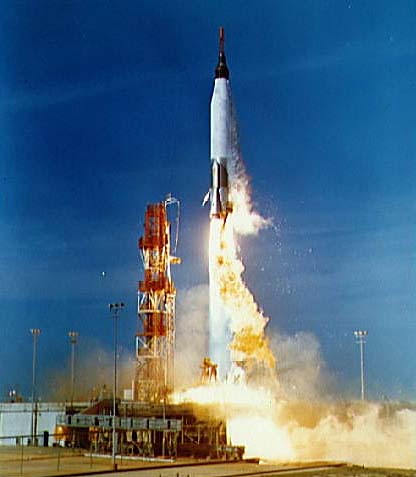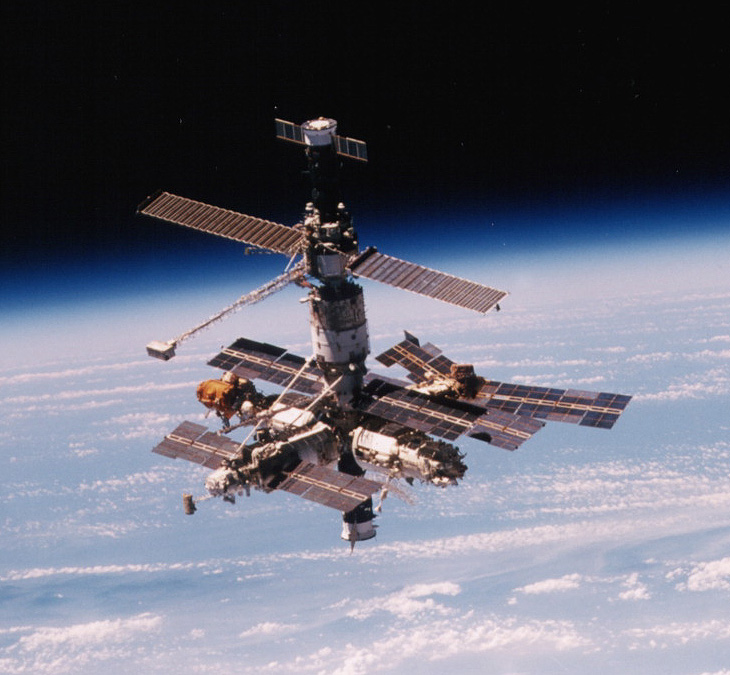Today’s space history installment shows how much the world can change …
Forty years ago today — April 19, 1971 — the Soviet Union launched the first space station, Salyut-1, from the Baikonur Cosmodrome. A Proton-K rocket carried the station to orbit, where it awaited the arrival of its first crew.
The Salyut-1 experiment did not end as well as it began, however. The first mission to reach the station, Soyuz-10, docked in April 1971 but the crew did not cross over into the station. The Soyuz-11 crew successfully inhabited the station in June 1971, but the crew died on re-entry when their spacecraft depressurized. Salyut-1 itself was de-orbited later the same year.
In the “how the world changed” department, 30 years to the day after the Salyut-1 launch — on April 19, 2001 — the Space Shuttle Endeavour carried a U.S.-Italian-Russian crew on a mission to the International Space Station.

(STS-100 launch. NASA image.)
STS-100 installed the remote manipulator “Canadarm-2” and the Italian cargo container “Raffaello” during ISS Assembly Flight 6A. U.S. astronauts Kent V. Rominger, Jeffrey S. Ashby, Chris A. Hadfield, Scott E. Parazynski, and John L. Phillips spent 11 days in space on the mission with Italian astronaut Umberto Guidoni and Russian cosmonaut Yuri V. Lonchakov.


















